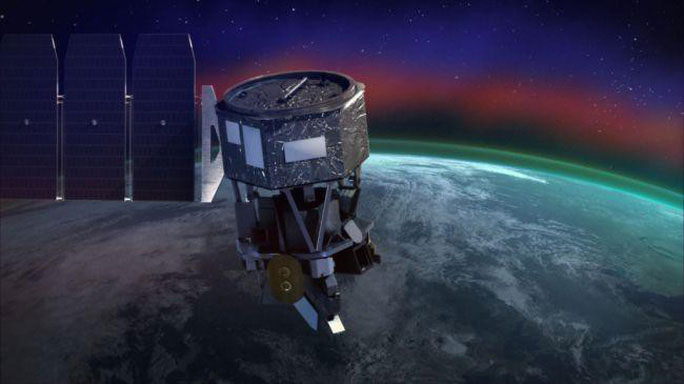NASA launches satellites to explore the mysterious region of the atmosphere
The US Aeronautics and Space Administration (NASA) launched a satellite to explore the mysterious area where the air meets space.
This satellite called Ionospheric Connection Explorer (ICON) has been launched into orbit after 2 years of delay. Five seconds after launching the satellite, the accompanying Pegasus rocket is activated, sending ICON into the flight path.
The region to be explored is the ionosphere , the upper layer of the atmosphere. The ionosphere is located from 50–80km to about 1000km. "This protective layer occupies the top of our atmosphere. This is our border with space," said Nicola Fox, a NASA official.

ICON satellite.(Photo: NASA).
Ms. Fox also said that many things happened in this area and they are not only caused by the sun. Storms, tornadoes, and other extreme weather conditions on earth also play a role.
Increased research and a better understanding of the ionosphere can help better protect astronauts and spacecraft in orbit by improving predictability.
ICON-sized satellites will study the emission of light formed by gas in the ionosphere, and measure the charged environment around the spacecraft at an altitude of about 580km. .
"This is an impressive physics laboratory," said Thomas Immel, a scientist at the University of California at Berkeley, who spoke about ICON satellite. He has also oversaw this mission for the past 2 years.
A NASA satellite launched in 2018, called Gold , also conducted research on the high atmosphere but at an area higher than the ICON mission.
A number of ionosphere studies are expected to be conducted next year, including missions at the International Space Station.
The ICON satellite was supposed to have been launched in 2017 but the mission was delayed because of the Northrop Grumman North Pegasus rocket problem.
- NASA launches the spacecraft to explore the Moon's atmosphere
- India launches 104 satellites with just one rocket, breaking Russia's record
- NASA studied the mysterious Martian atmosphere
- NASA launches the satellite to search for the planet TESS
- American company launches satellites visible from Earth
- India successfully launched seven satellites into orbit
- In 2013, Brazil and Ukraine will launch joint satellites
- Found NASA satellite missing 12 years in the universe
- America launches a secret spy satellite
- UARS satellites will fall sooner than expected
- Satellite Rosat rushes into the earth's atmosphere
- NASA launched 5 missiles measuring wind speed in space
 Van Allen's belt and evidence that the Apollo 11 mission to the Moon was myth
Van Allen's belt and evidence that the Apollo 11 mission to the Moon was myth The levels of civilization in the universe (Kardashev scale)
The levels of civilization in the universe (Kardashev scale) Today Mars, the sun and the Earth are aligned
Today Mars, the sun and the Earth are aligned The Amazon owner announced a secret plan to build a space base for thousands of people
The Amazon owner announced a secret plan to build a space base for thousands of people